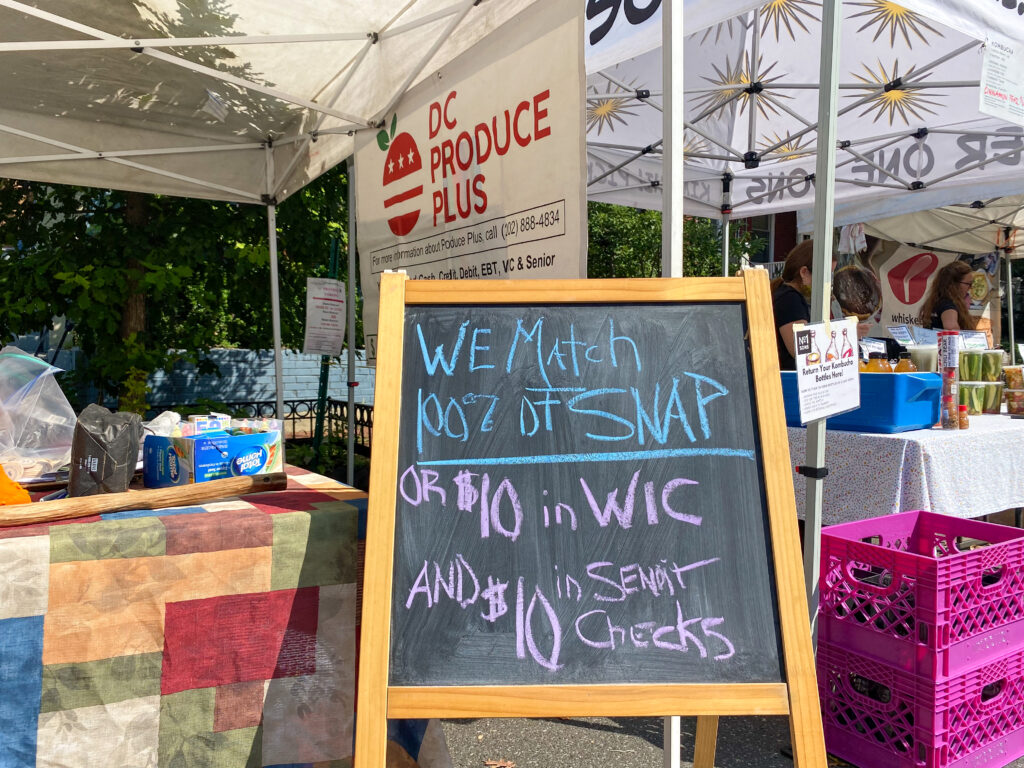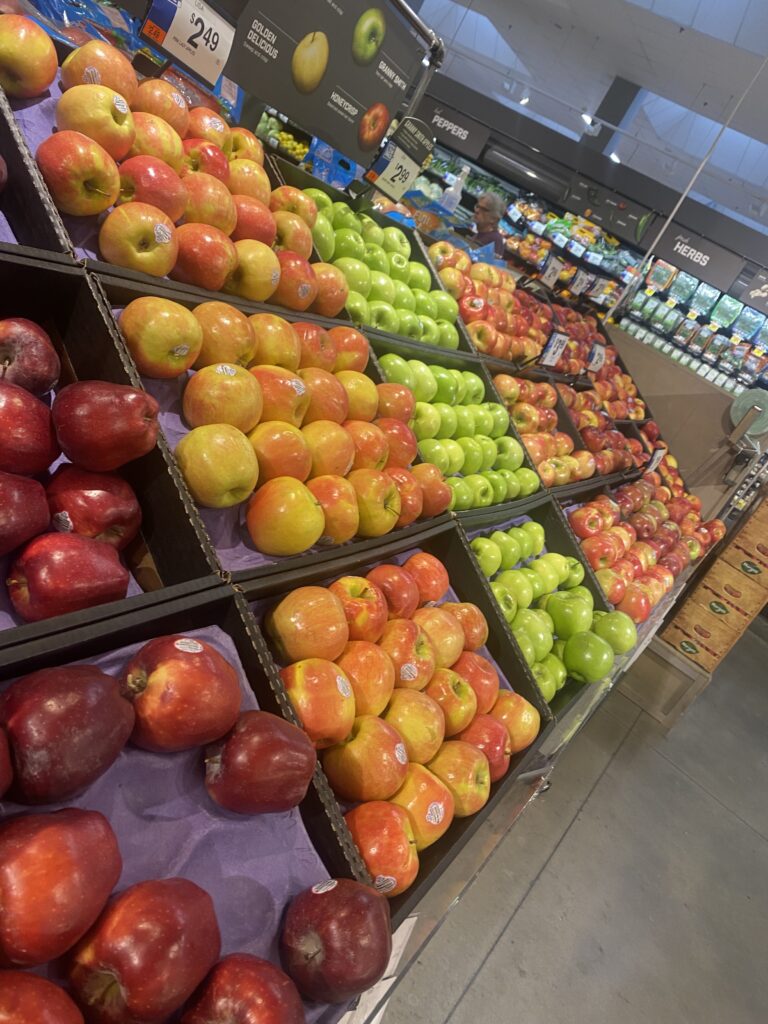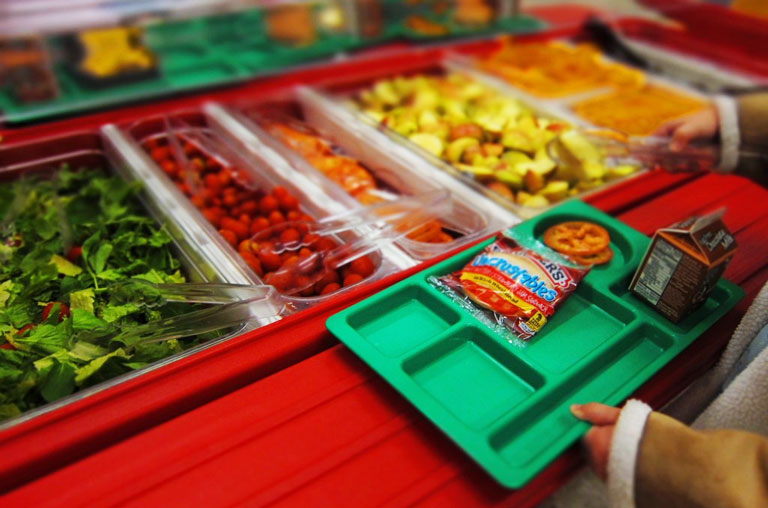Surging financial support for American families prevented food insecurity from rising during the pandemic, according to a U.S. Department of Agriculture report released this month. Results show 13.8 million households in the United States are food insecure, meaning there is a lack of “access at all times to enough food for an active, healthy life for all household members.” In the District, 10.3% of 336,000 households are food insecure — nearly equal to the national rate of 10.5% — compared to 8.5% in Virginia and 9.2% in Maryland.
The report says the “USDA granted states significant program flexibilities and contingencies to serve nutrition assistance program participants.” Those measures helped to decrease levels of food insecurity. In a 30-day period, November through December 2020, only 5.7% of Americans were food insecure overall — half the average for all of last year, the report says.
The future is uncertain, however, because many pandemic-related food programs expire on September 30.Pandemic-related food assistance programs replaced with an increase in spending from USDA. Beneficiaries and local programs talked about how the programs helped advertise buying from local farmers
At least 60 million families had emergency food needs last year
Despite the pandemic surge of federal benefits, families struck hardest by COVID-19 struggled. In the same 30-day period referenced above, healthy nutrition access wasn’t there for 16.4% of families where the lease or mortgage-holding adult couldn’t work due to the pandemic. In households where that adult wasn’t employed and the pandemic prevented job hunting, 20.4% were food insecure.
Overall, last year, Black and Hispanic families had at least 20% food insecurity, compared to less than 10% among white families. More than 27% of families led by a single mother are food insecure, relative to less than 10% among married households. All of this, according to the USDA report.
Income was the strongest indicator of food access. Families earning below 185% of the federal poverty line, a common qualification for support programs, were 33.7% food insecure. The pandemic meant families above that threshold needed help last year as well. In the U.S., 60 million families accessed government or community food help last year, according to the nonprofit Feeding America. The USDA estimated 38.3 million Americans were food insecure through 2020. So, an additional 21 million needed help last year for a short period.

How the government helped food-insecure families
The federal government introduced multiple resources to fight food insecurity throughout the pandemic, including a Pandemic Electronic Benefits Transfer (P-EBT) and summer lunch programs for children. The P-EBT program provided $1 billion each month, spread out to about 25 million people struggling to buy food.
To continue support after pandemic-related benefits end, the USDA is significantly upgrading the Supplemental Nutrition Assistance Program (SNAP), formerly known as food stamps. Starting Oct. 1, beneficiaries will receive an increase in monthly payments. Compared with pre-pandemic levels, the change will mean an average of $36.24 more in benefits per person per month.
The update comes after a USDA study revealed that nine out of 10 SNAP beneficiaries said they could not afford healthy food. Four key factors identified in the 2018 Farm Bill were used to analyze how SNAP could be altered: current food prices, the typical American diet, dietary guidance, and the nutrients in food items.
Based on these evaluations, the study found that the price of a “nutritious, practical, cost-effective diet” is 21% higher than what the current food plan budgets for. Based on this, the USDA announced a new version of the Thrifty Food Plan, which “represents the cost of a nutritious, practical, cost-effective diet prepared at home for a family of four.”

Other federally funded initiatives include the Special Supplemental Nutrition Program for Women, Infants, and Children (WIC) and the Seniors Farmers’ Market Nutrition Program (SFMNP). The criteria for qualifying for each of these plans (and many others) can be found at dcbenefits.dhs.dc.gov.
Benefits are directly deposited onto EBT and SNAP cards each month for beneficiaries to use. USDA provides an interactive map that shows where the cards are accepted (tinyurl.com/SNAP-Retailer-Locator).
Plenty of food, but too little access and awareness
D.C. Hunger Solutions, a local nonprofit, set up a SNAP outreach team to help residents submit applications. Three representatives dedicate their time to guiding beneficiaries through the application process for all federal food aids. It’s a 20-year-old initiative of the nonprofit Food Research & Action Center (FRAC), with the goal to “end hunger in the nation’s capital and improve the nutrition, health, economic security, and well-being of low-income District residents.”
“We’re not doing this because there’s a lack of food,” D.C. Hunger Solutions Director Beverley Wheeler said, “but a lack of access.”
Though there are many programs available, people don’t realize they qualify for them, she said. And in most cases, families qualify for multiple. The organization has lists resources at dchunger.org to ensure that those who are looking for food assistance can get it.
D.C. Hunger Solutions’ Federal Nutrition Programs Toolkit (tinyurl.com/DC-Hunger-Toolkit) outlines what benefits are available based on age group and status.
D.C. residents also benefit from many local food access programs that focus on healthy food. Several organizations have chosen to set up market locations in “food deserts” lacking easily accessible grocery stores.
Where can DC residents shop using food benefits?
Produce Plus D.C., which operated through 2021 under the nonprofit D.C. Greens, allows those who qualify to receive $20 per week to buy fresh groceries. The program runs every summer, June through September. Participants choose 10 of the 17 weeks that were offered to receive a total of $200 worth of fresh food. A map of markets that participated this year can be found dcgreens.org/customers.

“I think it’s wonderful for seniors to be able to get and afford fresh produce [through Produce Plus DC],” said Brookland resident Schye, who shops at farmer’s markets for her mother.
Freshfarm is a nonprofit that operates throughout the Mid-Atlantic region. They set up farmers markets in low-income neighborhoods to promote buying healthy foods. A list of market locations throughout the DMV can be found at freshfarm.org.
At its locations, Freshfarm sets up booths where people who use SNAP, WIC, and SFMNP can get a “Fresh Match” voucher. The voucher doubles the amount of SNAP benefits: every $1 of benefits becomes $2 worth of produce. The goal is to encourage spending SNAP dollars and other food benefits on fresh foods.
With such an abundance of options to buy fresh foods, Monroe Street Market Manager Laura Popielski said that the power of talking has been the best way to advertise all of the different options. She said there are neighbors who were unaware of the market until pandemic assistance programs encouraged people to seek out fresh foods. Over the last 18 months, Popielski said she’s seen an influx of people choosing to shop at Monroe Street Market.
Food benefits at local markets are easier for some than the grocery store
Having access to healthy foods is something that Ted McGinn, who manages two farmers markets in the District, said has been greatly appreciated by residents.
“Folks get really excited when they hear that their $100 can be used to buy $200 worth of food,” McGinn said.
McGinn has been managing the Bloomingdale Market, located at 101 R St NW, for 15 years and the 14th and U St location for 16 years. He lives a few blocks away from the Bloomingdale Market and has been working to support his neighbors in what he describes as “a problematic food desert.”

Harris Teeter and Giant are the only two large grocers nearby, he said, and for someone without access to a car or money for public transportation, going food shopping can be very time-consuming. This is why he sets up Bloomingdale Market in the heart of the community.
“It makes a huge difference for folks,” he said. “There’s a lot of young families that need this support.” Bloomingdale is a Freshfarm market and also participates in the Produce Plus D.C. program.
These programs are also available at markets in wards 7 and 8, where food insecurity has been a pressing issue for years. Yolanda Gayden helps manage three markets throughout the two wards: the East River Park Shopping Mall, Kenilworth Rec Center Market, and the Cesar Chavez Market.
Gayden said these markets are extremely popular among locals — it is typical for vendors to be low on stock or run out of certain items within one hour of opening. Both quality and quantity of the food that can be bought with $20 at the markets are better than what can be bought at local grocery stores, Gayden said.
Mary Regalado, who has been using SNAP on and off over the past few years, was unaware that SNAP benefits would increase in October. “[Produce Plus] encourages shoppers to buy more fresh foods,” Regalado said. She also said she appreciates the chance to support local farmers through the program.
McGinn has been witnessing food insecurity for almost two decades. Some are so eager to get food that they will wait hours in line for farmers markets. On the morning of Sept. 19, McGinn was greeted by a line of about a dozen people when he went to start setting up the Bloomingdale Market at 6 a.m. The market opens at 10 a.m.
“There are people who are really hungry in this city,” McGinn said.








